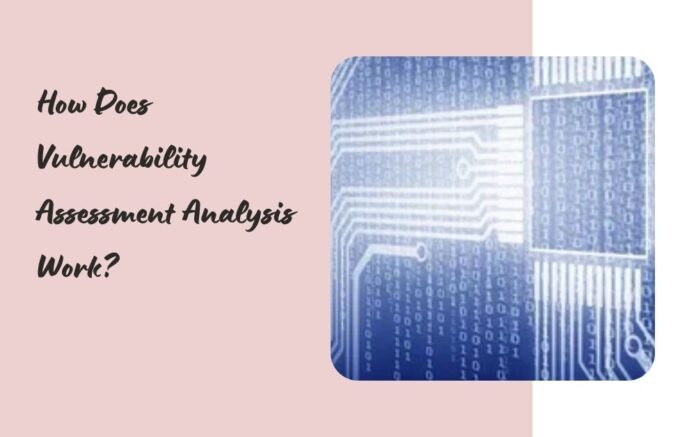Protecting your company from cyber dangers is more crucial than ever in the current digital era. A vulnerability assessment is one of the most important measures in protecting your organization. But what does that imply, and how does it work? In this blog post, we’ll simplify it down in layman’s words so that everyone understands how this critical process helps keep your information secure.
What is Vulnerability Assessment Analysis?
Understanding Vulnerability
Before we dive into the process, let’s first understand what a vulnerability is. In the context of cybersecurity, a vulnerability is a weakness in your system that could be exploited by a hacker. These weaknesses could be in your software, hardware, or even your employees’ behavior. Identifying these vulnerabilities is the first step in preventing cyber attacks.
The Purpose of Vulnerability Assessment
A Vulnerability Assessment is a systematic review of your systems to find these weaknesses. The main goal is to identify and fix vulnerabilities before hackers can exploit them. Think of it like a health check-up for your IT systems. Just like how regular health check-ups can catch potential issues before they become serious, regular vulnerability assessments can help prevent cyber attacks.
The Steps Involved in Vulnerability Assessment Analysis
1. Planning and Preparation
Before you start the actual assessment, you need to plan and prepare. This involves deciding what systems and data you will assess and setting clear goals for the assessment. It’s important to define the scope of the assessment – are you looking at your entire network, or just specific parts of it?
2. Identifying Assets
Next, you need to identify all the assets that need to be assessed. Assets can include everything from servers and databases to applications and network devices. This step is crucial because you need to know what you’re protecting.
3. Scanning for Vulnerabilities
This is where the actual assessment begins. Using specialized tools, you scan your systems for vulnerabilities. These tools can automatically detect weaknesses like outdated software, misconfigured systems, and other common issues. There are many different tools available, each with its strengths and weaknesses. Some popular tools include Nessus, OpenVAS, and Qualys.
4. Analyzing the Results
Once the scan is complete, you need to analyze the results. This involves looking at the list of vulnerabilities found during the scan and assessing their severity. Not all vulnerabilities are equally dangerous – some may pose a significant risk to your organization, while others might be less critical. Prioritizing these vulnerabilities helps you focus on fixing the most dangerous ones first.
5. Reporting
After analyzing the results, you create a report. This report should clearly outline the vulnerabilities found, their severity, and recommendations for fixing them. It’s important to present this information in a way that is easy to understand, especially if you need to share it with non-technical stakeholders.
6. Remediation
This is where you take action to fix the vulnerabilities identified in the assessment. Depending on the nature of the vulnerabilities, remediation can involve installing software updates, changing configurations, or even replacing outdated hardware. This step is crucial because identifying vulnerabilities is only half the battle – you also need to fix them to improve your security.
7. Re-Assessment
After remediation, it’s important to perform another assessment to ensure that the vulnerabilities have been properly fixed. This step is often overlooked but is critical to ensuring that your efforts have been successful. Re-assessment helps confirm that your systems are now secure and that no new vulnerabilities have been introduced during the remediation process.

Why is Vulnerability Assessment Important?
Preventing Cyber Attacks
The primary reason for conducting vulnerability assessments is to prevent cyber attacks. By identifying and fixing vulnerabilities before hackers can exploit them, you significantly reduce the risk of a successful attack. This proactive approach is much more effective than reacting to an attack after it has already happened.
Protecting Sensitive Data
Vulnerabilities can lead to data breaches, which can have serious consequences for your organization. Protecting sensitive data, such as customer information and intellectual property, is crucial. A vulnerability assessment helps ensure that this data is secure.
Compliance and Regulations
Many industries are subject to strict regulations regarding data security. Regular vulnerability assessments can help ensure that you remain compliant with these regulations. This not only helps avoid fines and penalties but also builds trust with your customers and partners.
Maintaining Business Continuity
A successful cyber attack can disrupt your business operations, leading to downtime and lost revenue. By identifying and addressing vulnerabilities, you can help ensure that your business operations remain uninterrupted.
Best Practices for Effective Vulnerability Assessment
Regular Assessments
Cyber threats are constantly evolving, so it’s important to conduct vulnerability assessments on a regular basis. This helps ensure that new vulnerabilities are identified and addressed promptly.
Comprehensive Coverage
Make sure your vulnerability assessment covers all aspects of your IT environment. This includes not just your network and servers, but also your applications, databases, and even employee practices.
Use Multiple Tools
Different vulnerability scanning tools have different strengths. Using multiple tools can help ensure that you identify a broader range of vulnerabilities. For example, some tools might be better at finding network vulnerabilities, while others might excel at identifying issues in web applications.
Involve Key Stakeholders
Vulnerability assessment is not just the responsibility of the IT department. Involve key stakeholders from different parts of the organization to ensure a comprehensive approach. This includes management, compliance officers, and even end-users.
Keep Up with Patches and Updates
One of the most common ways to fix vulnerabilities is by applying patches and updates. Make sure you have a process in place to keep your software and systems up to date. This simple step can go a long way in reducing vulnerabilities.
Train Your Employees
Human error is a common cause of vulnerabilities. Regularly train your employees on best practices for cybersecurity, such as recognizing phishing attempts and using strong passwords. An informed workforce is one of your best defenses against cyber threats.
Conclusion
Vulnerability assessment analysis is a crucial part of any cybersecurity strategy. By identifying and fixing vulnerabilities before they can be exploited, you can protect your organization from cyber threats. The process involves several key steps, from planning and scanning to remediation and re-assessment. By following best practices and conducting regular assessments, you can help ensure that your systems remain secure and your data protected. Remember, in the world of cybersecurity, staying one step ahead of potential threats is the key to keeping your organization safe.
For more insightful articles related to this topic, feel free to visit getmeta

